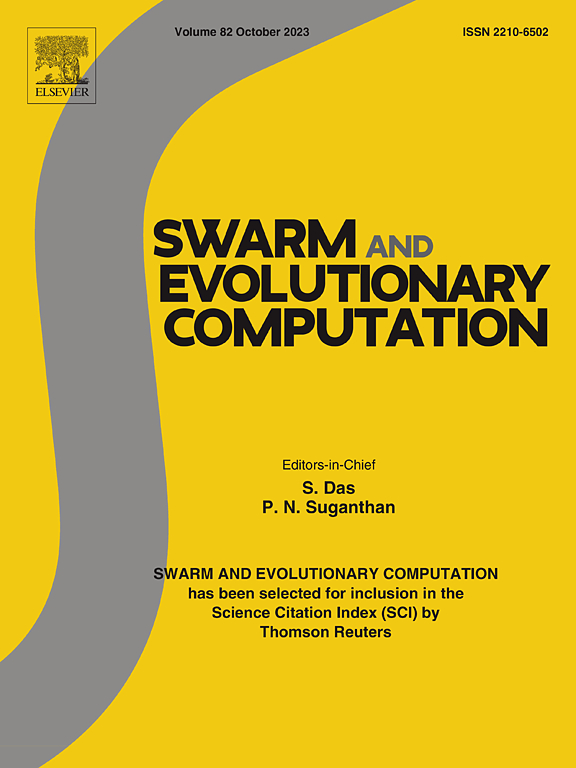Quantum circuit mapping based on discrete particle swarm optimization and deep reinforcement learning
IF 8.2
1区 计算机科学
Q1 COMPUTER SCIENCE, ARTIFICIAL INTELLIGENCE
引用次数: 0
Abstract
Current quantum devices are constrained by a limited number of physical qubits and their sparse connectivity. When executing logical quantum circuits on these devices, it is necessary to map them into equivalent circuits adhering to these constraints. The initial allocation of logical qubits to physical ones and the strategic addition of SWAP gates to meet connectivity requirements are critical decisions impacting the performance of mapped circuits. To tackle these challenges, this paper presents a novel quantum circuit mapping method that integrates discrete particle swarm optimization and deep reinforcement learning. Initially, a qubit allocation algorithm using discrete particle swarm optimization with a sorting selection strategy quickly maps logical to physical qubits. Then, an enhanced double deep-Q-network based quantum gate scheduling algorithm with an action space search strategy obtains a SWAP addition scheme that results in shallower depth and fewer additional quantum gates. Comparisons on benchmark datasets (B131 and B114) and the IBM Q20 quantum device show that our method outperforms others regarding algorithm runtime, mapped circuit depth, and the number of added SWAP gates. It also demonstrates scalability on large-scale circuits and IBM Q127. Compared to heuristic methods (subgraph isomorphism and filtered depth-limited search based quantum circuit mapping algorithms), it reduces the average number of added SWAP gates by 29.1% and the average runtime by 41.95%. Compared to a recent reinforcement learning method using Monte Carlo Tree Search for mapping, it decreases the average added depth by 26.05% and the average number of added SWAP gates by 25.58%. Moreover, compared to commercial compilers tket and qiskit, the proposed method results in 14.73% and 16.55% fewer SWAP gates, respectively.
求助全文
约1分钟内获得全文
求助全文
来源期刊

Swarm and Evolutionary Computation
COMPUTER SCIENCE, ARTIFICIAL INTELLIGENCEC-COMPUTER SCIENCE, THEORY & METHODS
CiteScore
16.00
自引率
12.00%
发文量
169
期刊介绍:
Swarm and Evolutionary Computation is a pioneering peer-reviewed journal focused on the latest research and advancements in nature-inspired intelligent computation using swarm and evolutionary algorithms. It covers theoretical, experimental, and practical aspects of these paradigms and their hybrids, promoting interdisciplinary research. The journal prioritizes the publication of high-quality, original articles that push the boundaries of evolutionary computation and swarm intelligence. Additionally, it welcomes survey papers on current topics and novel applications. Topics of interest include but are not limited to: Genetic Algorithms, and Genetic Programming, Evolution Strategies, and Evolutionary Programming, Differential Evolution, Artificial Immune Systems, Particle Swarms, Ant Colony, Bacterial Foraging, Artificial Bees, Fireflies Algorithm, Harmony Search, Artificial Life, Digital Organisms, Estimation of Distribution Algorithms, Stochastic Diffusion Search, Quantum Computing, Nano Computing, Membrane Computing, Human-centric Computing, Hybridization of Algorithms, Memetic Computing, Autonomic Computing, Self-organizing systems, Combinatorial, Discrete, Binary, Constrained, Multi-objective, Multi-modal, Dynamic, and Large-scale Optimization.
 求助内容:
求助内容: 应助结果提醒方式:
应助结果提醒方式:


